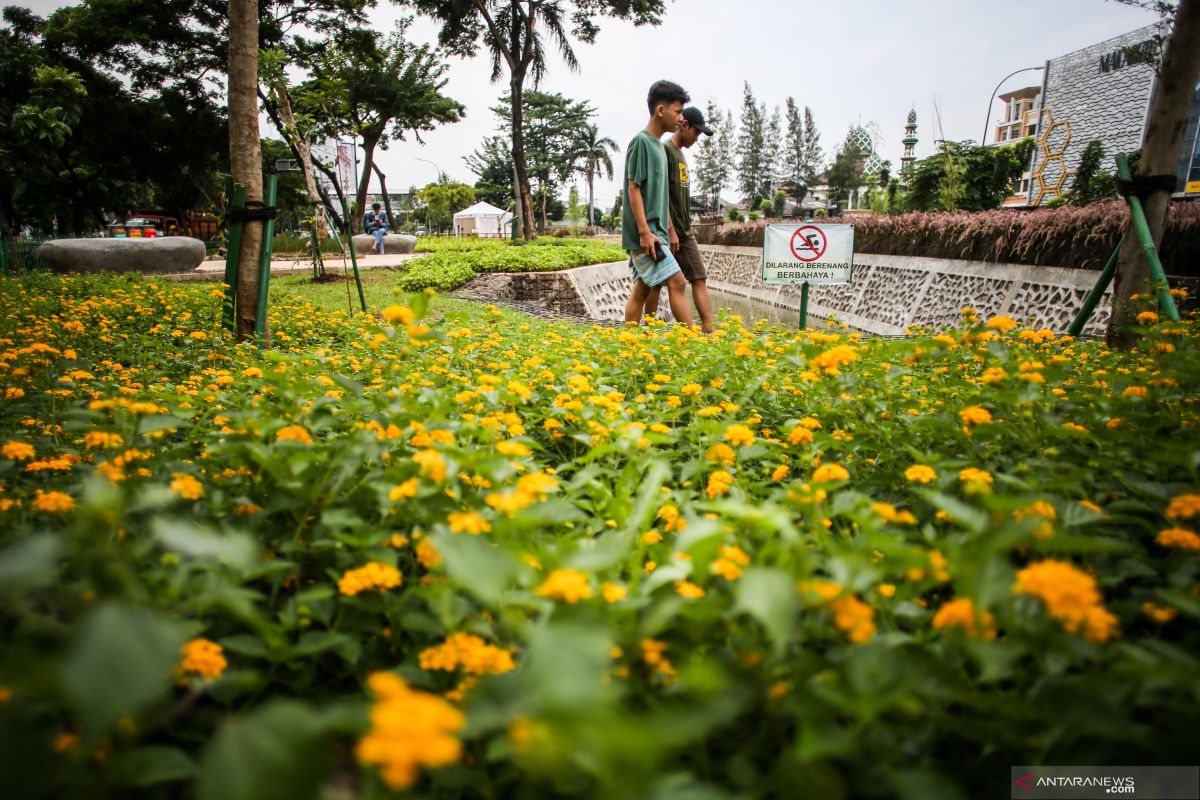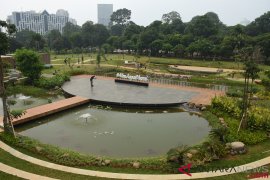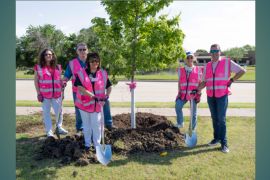One of the ways to relieve fatigue is to seek refuge and spend time under lush trees that provide shade from Jakarta's heat and fresh oxygen to breathe.
Jakartans can get such a fresh boost at the green open spaces (RTH) available in several places across the province.
Jakarta's regulation defines RTH as public areas where plants, growing naturally or through human intervention, are preserved. The green spaces comprise public parks, green lanes, community gardens, and city forests.
According to the Jakarta authority database, the total area size of RTHs in the province reaches 33.54 square kilometers, with East Jakarta hosting 26.2 percent of Jakarta’s RTH, the highest among other Jakarta regions.
It was followed by South Jakarta, at 24.87 percent; North Jakarta, 20.93 percent; Central Jakarta, 12.69 percent; and West Jakarta, 8.64 percent.
Meanwhile, Article 2, Paragraph 1, of Jakarta Governor Regulation No. 9 of 2022 mandates the authority to make 30 percent of Jakarta’s total area an RTH. While the law sets 20 percent of the green space to be developed as public RTHs, another 10 percent will be for private RTHs.
However, the total area of RTH in Jakarta constitutes only 5.2 percent of the province’s total area of 661.5 square kilometers.
To ensure adherence to the law provisions on RTH, the provincial authority is advancing the development of green spaces with various trees and plants for residents to enjoy.
The Jakarta provincial authority planned to develop 29 new city parks throughout the province this year. The new parks will complement the city’s existing 23 city parks, which currently cover 6.7 hectares of total area.
Related news: Jakarta adds 800 green open spaces as pollution-fighting measure
The 29 new city parks will increase the total area of Jakarta’s city parks by 5.1 hectares.
With its size of 13,457 square meters, a new city park at Duri Kosambi Village, Cengkareng Sub-district, West Jakarta, will be the largest among the 29 new parks.
Apart from creating new parks, the Jakarta authority also plants more trees.
Recently, Jakarta’s Parks and Urban Forest Agency planted 130 trees in the province’s five administrative cities earlier this month. The provincial authority targets conducting more planting activities under the “Plant on Friday” movement.
“The purpose of the agenda is to make Jakarta a greener, healthier, and more beautiful city,” agency official Ivan Murcahyo remarked.
In the upcoming months, the authority plans to plant more than 20,000 trees on barren lands or areas affected by infrastructure development throughout the province, including 1,000 trees at a former landfill site in East Jakarta.
The provincial authority is creating a cleaner, tidier, and more sustainable city for its residents by providing more green spaces, which means more trees and vegetation. It will also bolster the quality of life for Jakarta's residents seeking to live more comfortably in the metropolis.
Apart from depending on new park development and trees planted by the provincial authority in public parks and new forests, residents can also play their part in encouraging greener development at the community level.
Jakarta Food Resilience, Marine, and Fisheries Agency head Suharini Eliawati pointed out that urban farms, which residents can start developing in their homes, can help make Jakarta greener.
Urban farming is impactful to Jakarta's environment since it has been implemented in various public spaces, idle land plots, as well as public spaces such as schools and apartments throughout the province.
Related news: Jakarta to increase urban green spaces in fight against pollution
The provincial office stated that urban farming helps reduce Jakarta's average temperature by two degrees and makes the city greener by 83.49 percent.
“Urban farming for greening Jakarta has been included in our Grand Design of Urban Farming, which mandates 30 percent of green open spaces utilized for productive plants,” Eliawati stated.
The agency database indicated water spinach, cassava, banana, avocado, and chili as the most popular plants in Jakarta’s urban farms.
Residents can also apply for free plant seeds from the authority. The move is expected to encourage more residents to start their own farms.
For the benefit of Jakarta, the provincial office decided to designate urban farming as one of its main programs. The agency continues to promote urban farming through collaboration with local communities, the Urban Farming Academy, gardening class sessions, and initiating the Jakarta Planting Movement for Food Resilience.
All stakeholders can play their part in realizing a greener Jakarta. While the government continues to implement greening policies and develop new green projects, residents could start setting up their home gardens or farms for a greener neighborhood.
Lush trees and productive food plants will equally make Jakarta cleaner and cooler. While trees provide shade and respite from Jakarta's heat, food plants offer sustenance that can be enjoyed right away.
Developing more green spaces and planting more trees in Jakarta will also be a small step toward mitigating climate change and global warming, creating more water catchment areas, and reducing pollution not only in Jakarta but also in the Greater Jakarta area.
Related news: Jakarta entrenching food security by boosting urban agriculture
Related news: Four-story residential buildings in Jakarta should apply green concept
Editor: Anton Santoso
Copyright © ANTARA 2024












